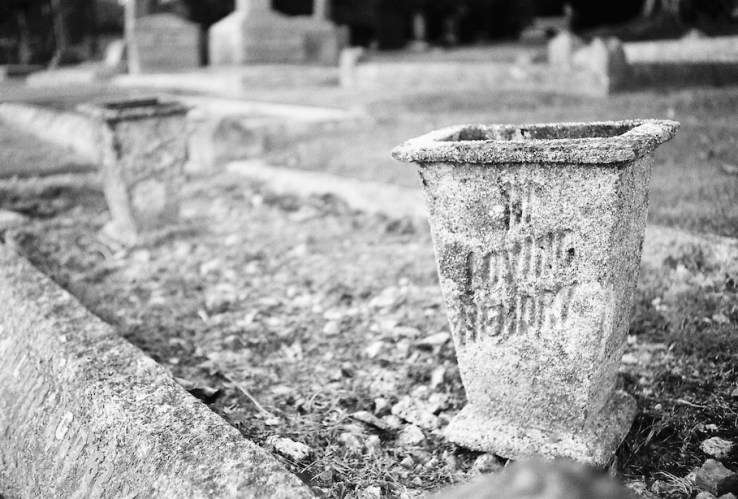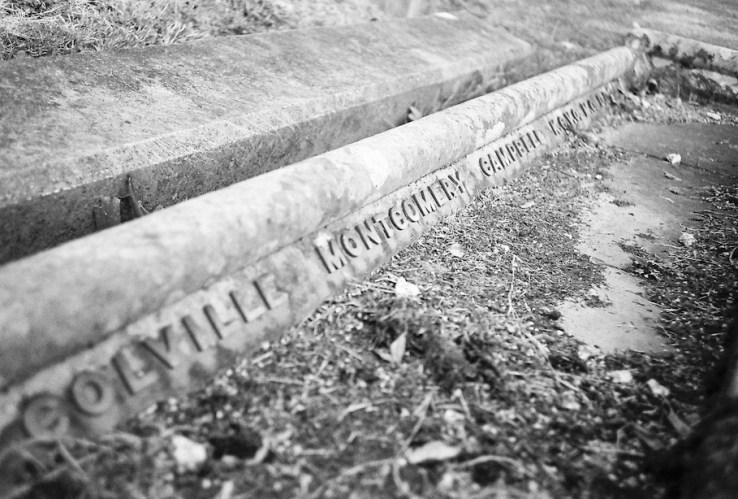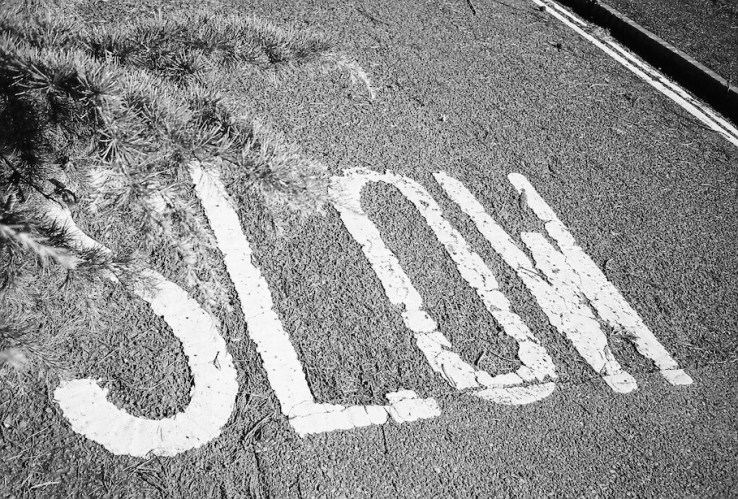
Olympus made more than a few of the Olympus Mju 1, or to give it its full name, µ[mju:]-1, and over the last four years, I’ve had three of them.
The first two I enjoyed using but struggled to get any memorable pictures from them, and ended up selling them off, greatly disappointed.
My third example had similar beginnings, with a lacklustre test roll, so I was almost ready to give up on the promising little Olympus once and for all.
But something implored me to try one more roll, and though most of the shots were once again a let down, a couple were impressive enough to encourage me to experiment more.


After another roll still, the keeper rate (the number of shots I like enough to share online) has shot up vastly, and I’m sold on the charms of the Mju 1 for good.
Here’s why I’ve finally realised why Olympus’s tiny AF wonder is such a beauty –
Size
One of very few genuinely trouser pocketable compact film cameras out there. I’ve had dozens that can be persuaded (ie forced) into a coat pocket, but the only ones I would call truly pocketable are the Mju 1, its older siblings the XA and XA2, the Minox 35 range, and Minolta’s AF-C. The Mju 1 excels in its sleekly streamlined shell adding further to its compactness.
Yes, its successor, the Mju II, is as slender, but for me the handling is poor and for the brief time I had one I nearly dropped it every time I went to use it. For me, Olympus took the compact design too far, and failed. If you can’t use the camera effectively it doesn’t matter if it’s as small as a box of matches.

Ergonomics
Which ties in with the small size. The killer curves of the little Mju, which are excellent when the sliding lens cover is closed and even better when its open, make it a joy to hold and shoot with. The combination of the curved rear thumb rest and shaped front finger grips are an inspired design.
When you want to photograph in a slower and more contemplative way, the Mju’s handling is just as reassuring. When shooting two handed and/or at awkward angles, I use my left hand with thumb and forefinger at right angles to rest the camera upon. It really could not fit better in my hands.
Immediacy
Or in other words, the “pure point and shoot-ness” of the camera. The Mju 1 is I think the only camera I can take out of my pocket, slide open the cover, take a photo then close it and return to my pocket in a matter of a couple of seconds. With one hand. In my book its exquisite design make it the definitive point and shoot compact.

Auto Focus
First of all the AF seems very reliable. I can’t recall having a shot yet where the camera hasn’t focused where I wanted it to.
Second, the AF confirm light in the viewfinder is clear, bright and logical. If the camera has locked focus (with a half press of the shutter button), the AF light remains steady green. If you’re too close (or the camera can’t focus for another reason) it flashes slowly. Simple, but so many compacts don’t give you this feedback.
Thirdly, and probably best of all, the Mju’s little lens focuses down to just 0.35m, an absolute delight for someone like me who loves shooting up close, but where the standard close focus for compacts is 0.8-0.9m. The difference between 0.8m and 0.35m is huge in terms of how many more creative options are available, and how much more of the world it becomes possible to capture.
As much as I love the Olympus XA, and its lens is very impressive in the final result, I struggle hugely to focus with its tiny rangefinder patch, and half the shots I take seem to be slightly off in focus. No such frustrations with the Mju 1, meaning ultimately I’d reach for the Mju now ahead of the XA.

Lens
Although there are a plethora of compacts with very impressive 35mm f/2.8 lenses, the Mju’s humble 35/3.5, 3 elements in 3 groups lens is very good once you find what it likes.
At my level of photography (enthusiastic amateur), and for someone who doesn’t make/need large prints, the best photographs I’ve made with the Mju 1 have been more than good enough to not make me want to ditch the baby Olympus and reach for a more sophisticated f/2.8 that’s two or three times the bulk.
The focal length of 35mm is pretty much perfect for a compact, allowing a decent depth of field when shooting wider scenes, but still, combined with the Mju’s aforementioned close focus of 0.35m, gives some pleasingly shallow depth of field. In fact it’s more capable of “SLR like” shots than nearly all other compacts I’ve used.

Autoexposure range
Cleverly, the Mju 1’s shutter range is 1/15s to 1/500s. Which means you needn’t worry about camera shake, as long as you have a reasonably steady hand. I’ve shot handheld at 1/8s with SLRs without any problems.
The max shutter speed of 1/500s at f/16 is fast enough enough in bright sunlight and with ISO400 film, which is the fastest film I use. Mostly I use ISO200 or 100, so in the less than scorching UK the Mju with its smallest aperture of f/16 shouldn’t ever max out.
Flash control
I never use flash. So being able to switch it off is pretty important to me. The flash of the Mju can’t be permanently switched off like some of the early 80s compacts where if the flash isn’t physically popped up, it can’t fire. Neither is it like cameras like the XA series or Minolta AF-C which require separate flash units. Disabling the flash requires two presses of a fairly small button, and this needs to be done again every time you switch the camera on.
But, crucially, the Mju tells you when it wants to use the flash. In the default start up mode of Auto Flash, when you half press the shutter button to lock focus, the red flash light comes on in the VF to advise you of its intentions. At this point, you can then release the shutter button, disable flash with the double button press, recompose and shoot.
In practice, as I shoot mostly in decent outdoor light, this rarely happens, so I can confidently shoot in the default Auto Flash mode without fearing I’ll be unexpectedly blinded at any moment, like with some cameras. Yes I’d rather have no flash at all, but having the camera intelligently warn you is the next best thing. Well done Olympus for giving us the best of both worlds.

Of course, like any camera, as good as the Mju 1 is, it isn’t perfect.
So what does it lack?
A big VF
The viewfinder isn’t the biggest or brightest you’ll ever find, and the early 80s compacts by Nikon, Canon, Konica, Pentax, Ricoh and Olympus themselves give a far bigger, clearer view. But they’re all two or three times the bulk of the Mju 1. And at least two or three times more noisy!
The VF of the Mju 1 is perfectly adequate for composition, and to set where you want the camera to focus. It also has parallax correction frame lines for when you’re shooting really close. Once you’re used to it, and you remember how small the camera is overall, the VF isn’t an issue.
Manual ISO setting
I use this mostly to overexpose expired film to get more saturated colours. The majority of film I use is ISO200, so I can either just shot this at box speed in the Mju, or if I want to overexpose a stop, simply put a piece of black tape over the DX code. Because for non-DX coded film, the Mju defaults to ISO100, so it’s an easy way of tricking the camera to overexpose ISO200 film a stop.
Yes ideally I like to shoot expired rolls of the beautiful Superia 100 at ISO80 or 64, but it’s not a massive deal, an if I was really concerned I could use/ make some DX code labels to fool the Mju to rate the film at ISO50, the only speed it has lower than ISO100 anyway. ISO200 film plus the black tape trick if and when I need it is just fine.

Manual exposure
In truth, even with an SLR I stick around the same kind of aperture – f/5.6 to f/8. With the Mju’s strength (in my view) being closer shots (it focuses down to just 0.35m remember), at this distance the depth of field is going to be far more shallow anyway, and so far in using the Mju I haven’t been disappointed and thought “I wish I could get a more shallow depth of field”.
The autoexposure seems very intelligent, so much so that I can’t recall a single image where I wished the camera had used a great smaller or larger aperture. This is a tiny AF compact remember.
Having said that, considering it is a compact, the pictures I’ve been able to make are probably more SLR-like than any other compact camera I’ve used. So in practice, not having manual exposure isn’t really an issue at all, especially when the Mju as designed to be a pure point and shoot.

All in all, once I’d made those couple of breakthrough images, the final piece of the Mju puzzle fell into place, and I realised how much of a(nother) little gem Olympus had created.
Right now, if I had to pick just one AF compact from my collection and put away the rest, the Mju 1 would be first choice.
So enamoured am I, I very recently bought an LT-1 (essentially a Mju-1 in a fancy leather jacket) and an AF-1 Mini, reputedly the same lens as the Mju-1, but in a lighter yet weatherproof outer casing. I’m hoping these two will bring as many smiles to my face in the coming weeks as their original sibling has.
If you haven’t tried one – or like me tried a couple of times with lacklustre results – please pick up a Mju 1 and have a(nother) go. Once you start to understand their beauty, there really is no going back, and those bulkier “compacts” start to look a lot less appealing…


[…] Mju Little Beauty […]
[…] The Minimalist Dream… on Mju Little Beauty […]
[…] At the heart, five SLRs (Contax, Contax, Contax, Asahi Spotmatic, Canon EOS), accompanied by a handful of compacts, including arguably my favourite I’ve used the humble Olympus Mju-1. […]
[…] once I’d started to find my tastes more and gave up on the 35mm compacts after realising that the Olympus Mju pretty much does all I ever need, and even after I thought that M42 and Minolta SR were the only […]
[…] camera is the Olympus Mju 1 (or µ[mju:]-1), aka the Stylus in some […]
[…] shifted more towards later more plastic film cameras, like Canon SureShot, Pentax Espio and Olympus Mju compacts, as well as exploring SLRs from the 80s and 90s like the Minolta Dynax 7000, Konica FS-1 […]
[…] Bottom middle, the fabulous Olympus Mju-1, which I gushed about in a post aptly named Mju Little Beauty. […]
[…] I tried the Mju 1 and its posh sibling the LT-1, and both were little crackers, and amongst my favourite film cameras […]
[…] I still owned the three film compacts I’d chosen to keep after experimenting with dozens. An Olympus Mju 1, an LT-1, and a Ricoh […]